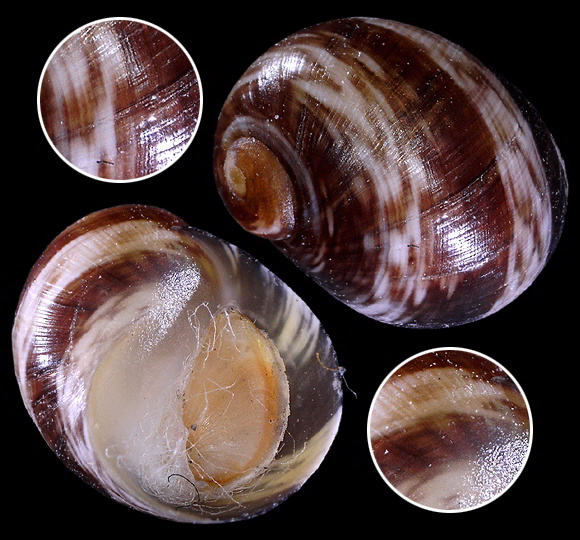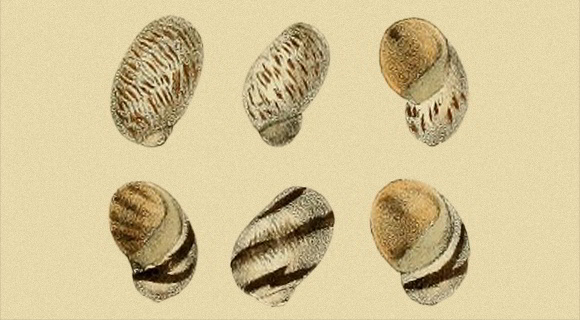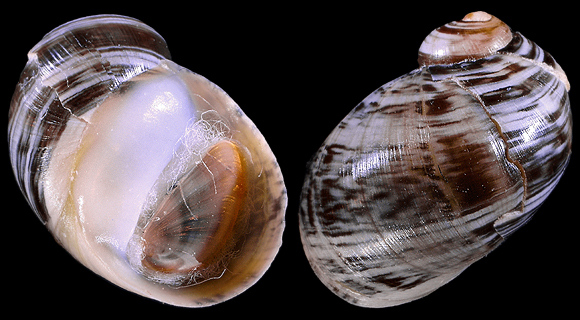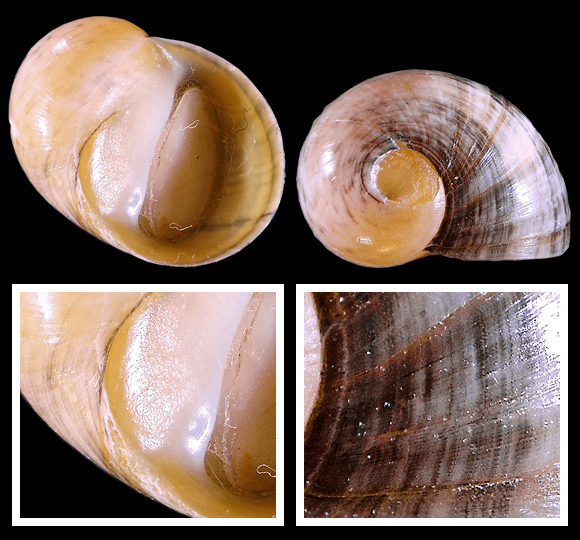
Grazer, on stones and rocks in freshwater streams.
Original taxon: Neritina hidalgoi.
« Shell roughly oval, rather thin, dull and presenting, on a dirty white background, fascias or black reticulalions, or a combination of these two systems of ornaments (PI. XI, fig.2, 2a and 2b). Spire slightly protruding, inclined laterally and terminated by an obtuse apex, inconspicuous and sometimes truncated. Suture simple. Whorls 2½, rapidly growing and convex in shape; last one large, developed, forming almost the entire shell on its own, showing no signs of constriction in its middle part and rounded at the base. Aperture of a livid lemon yellow, leaving more or less appear, by transparency, the fascias of the last whorl of the spire. Columella not denticulate, ending in a fairly developed callous deposit of a dirty yellow colour. » – H. Crosse: “Description d’une nouvelle espèce de Neritina d’Espagne”, Journal de Conchyliologie vol.28, Paris 1880, p.321.
Northern Alicante Province, Comunidad Valenciana, E. Spain. 6mm.

«By its colours as well as by its habitat, this species is very close to the typical N. Valentina and to the form that M. Graëlls distinguished under the name of N. Velascoi, but it differs from it by its undeveloped spire, not at all turriculate and with very pronounced lateral inclination; by its last whorl uniformly rounded and showing no appearance of constriction in its middle part; by the more or less orange yellow of its aperture; finally, by its noticeably smaller size. We are pleased to dedicate it to our honorable colleague from Madrid, Dr. J. Gonzalez Hidalgo, well known in science for his important work on the molluscs of Spain, Portugal and South America. »
Above: the two variants in Crosse, plate XI.

